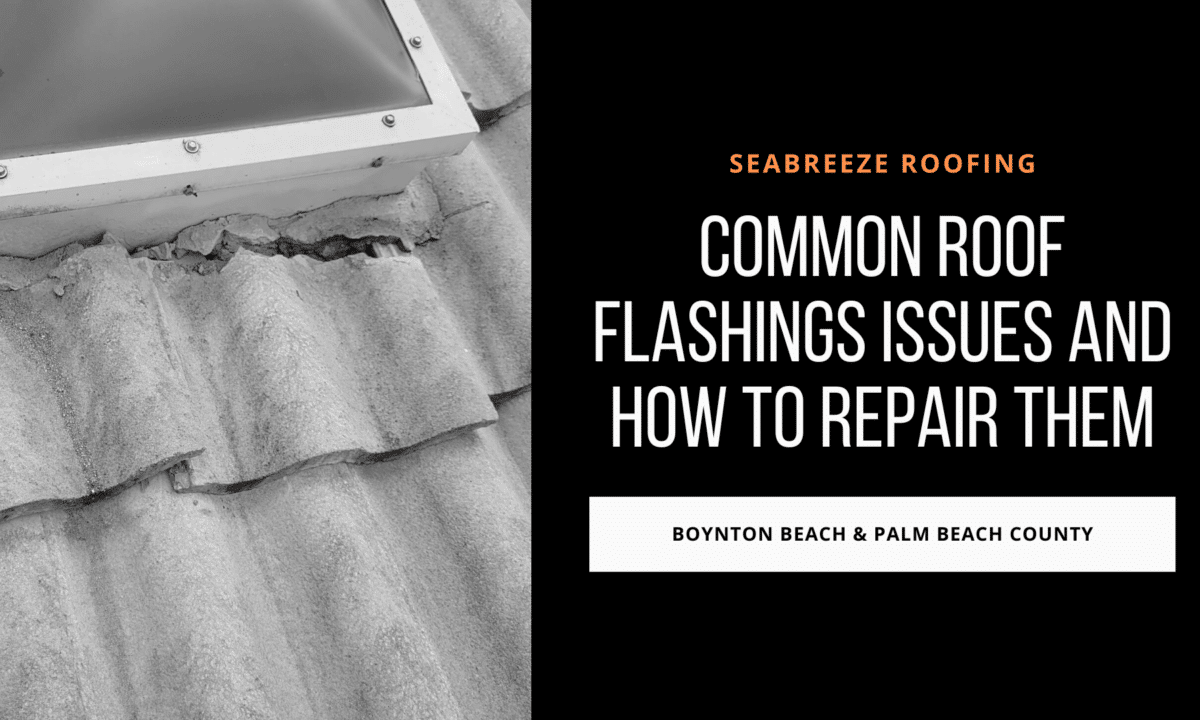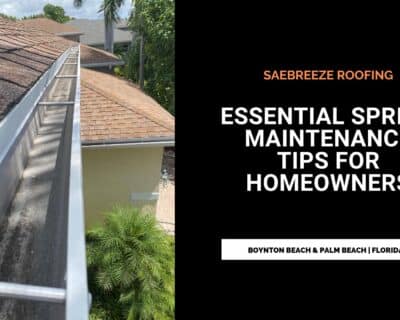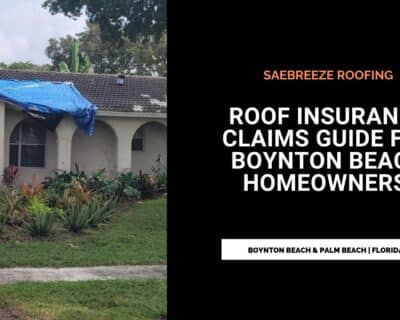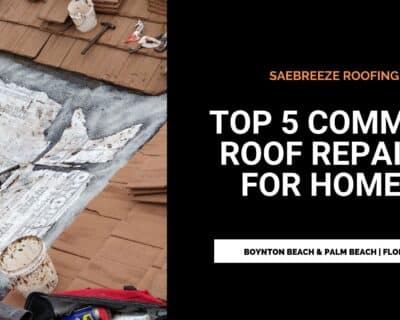Blog

The Flashing Chronicles: Most Common Roof Flashings Issues and How to Repair Them
Roof flashings issues account for 90% of roof leaks at homes in Boynton Beach. See the top 10 most common roof flashing issues and how to repair them.
Metal flashings are an unsung hero against water intrusion and damage in roofing, tirelessly defending your home’s structural integrity. Over 90% of roof leaks occur at the flashings, as they are often overlooked because they are out of sight and out of mind. Follow along as we delve into the top 10 common roof flashings issues that can cause roof leaks for homes in Palm Beach County and how to fix them. Ensuring your roof flashings remain in optimal condition is essential. Join us as we unveil the secrets to fixing and sealing these flashings to prevent roof leaks at your home or business.
Top Roof Flashing Issues and How to Fix
Roof to Wall Flashing:
The roof-to-wall flashing is a frequent location for leaks and stands guards where the roof and walls converge. If your flashing is damaged or missing, enlist the aid of a roofing professional to replace it with new, properly installed flashing. They will recommend the best materials and methods to ensure a long-lasting repair.
Skylight Flashing:
One common flashing failure that can cause water damage near skylights in Boynton Beach homes is improper installation or deterioration of the skylight flashing. To repair, the old flashing needs to be removed and replaced with new, properly installed flashing. Ensuring the flashing is correctly installed is vital to prevent further water damage.
Chimney Flashing:
Chimney flashing is the steadfast protector of the union between your chimney and roof. When it falters, call a professional to replace it with new flashing, overlapping the shingles or roofing material, and sealing it with roofing cement or an appropriate sealant.
Pipe Flashing:
Guarding the vulnerable points where pipes penetrate your roof, pipe flashing demands respect. If damaged or leaking, replace it with a new rubber or metal boot, sized and installed around the pipe. Seal the boot with roofing cement or an appropriate sealant to prevent water intrusion.
Step Flashing:
Step flashing valiantly defends the joint between your roof and the side of a chimney or dormer. If damaged or missing, bestow upon it new flashing, install in a step-like pattern, and seal with roofing cement or an appropriate sealant.
Valley Flashing:
Valley flashing is the bulwark that secures the low points of your roof. If compromised, replace it with new flashing, install it along the valley, and seal it with roofing cement or an appropriate sealant to prevent water intrusion.
Drip Edge Flashing:
Defending the edges of your roof, drip edge flashing is the unsung hero that directs water away from the fascia and into the gutters. If damaged or missing, replace it with new flashing, installed along the roof’s edge and sealed with roofing cement or an appropriate sealant.
Soffit Flashing:
The sentinel that stands watch between your roof and soffit is none other than the soffit flashing. If damaged or missing, replace it with new flashing, installed between the roof and soffit, and sealed with roofing cement or an appropriate sealant to prevent water intrusion.
Get Help With Your Roof Flashings
The roof flashing has many faces, but they all share a common goal: protecting your Boynton Beach home from water intrusion and damage. Trusting in their steadfast protection is essential, but ensuring they remain in optimal condition is equally important. If you’re uncomfortable repairing or replacing flashings, hire a professional roofing contractor like Seabreeze Roofing to guarantee the job is done correctly.




